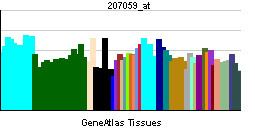Entrez 5083 | Ensembl ENSG00000198807 | |
 | ||
Aliases PAX9, STHAG3, paired box 9 External IDs MGI: 97493 HomoloGene: 31360 GeneCards: PAX9 | ||
Paired box gene 9, also known as PAX9, is a protein which in humans is encoded by the PAX9 gene. It is also found in mammals.
Contents
Expression and Function
This gene is a member of the paired box (PAX) family of transcription factors. During mouse embryogenesis Pax9 expression starts from embryonic day 8.5 and becomes more evident by E9.5; at this stage its expression is restricted to the pharyngeal endoderm. Later on, Pax9 is also expressed in the axial skeleton. Pax9 is required for craniofacial, tooth and limb development, and may more generally involve development of stratified squamous epithelia as well as various organs and skeletal elements. PAX9 plays a role in the absence of wisdom teeth in some human populations (possibly along with the less well studied AXIN2 and MSX1).
Clinical significance
This gene was found amplified in lung cancer. The amplification covers three tissue developmental genes - TTF1, NKX2-8, and PAX9. It appears that certain lung cancer cells select for DNA copy number amplification and increased RNA/protein expression of these three coamplified genes for functional advantages.
Interactions
PAX9 has been shown to interact with JARID1B.
